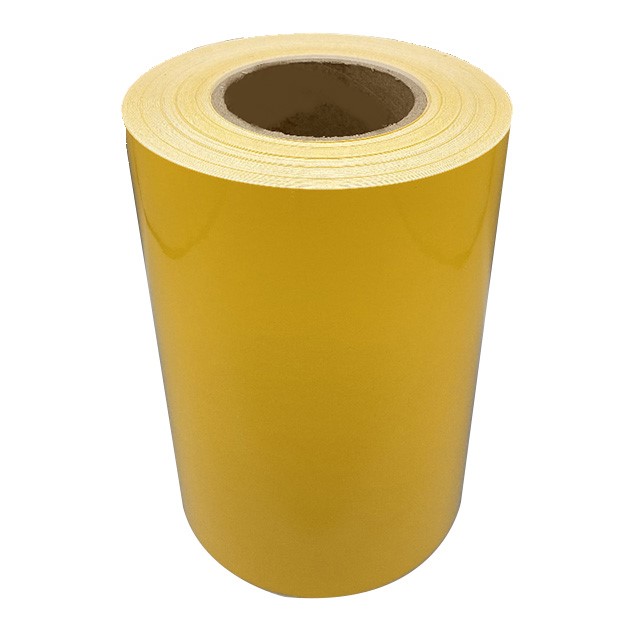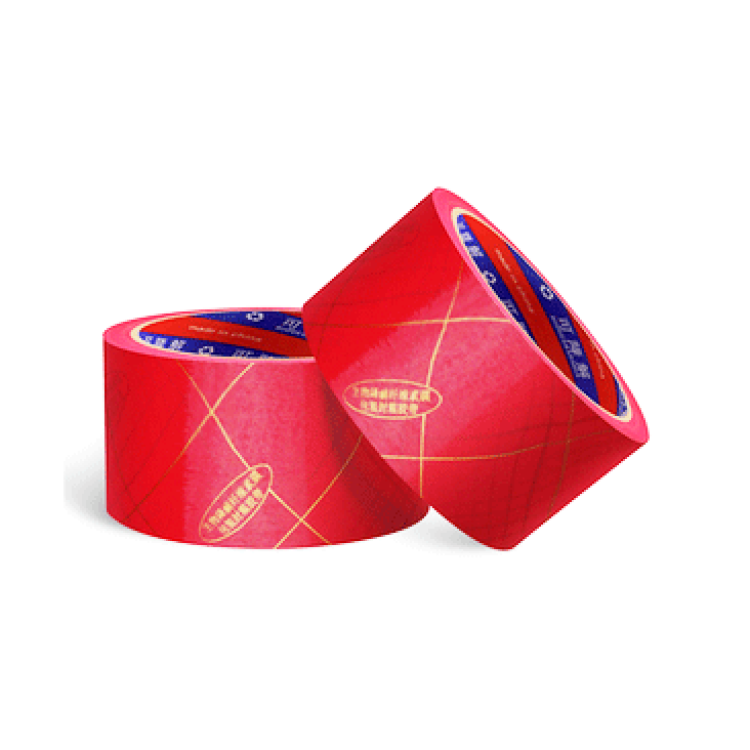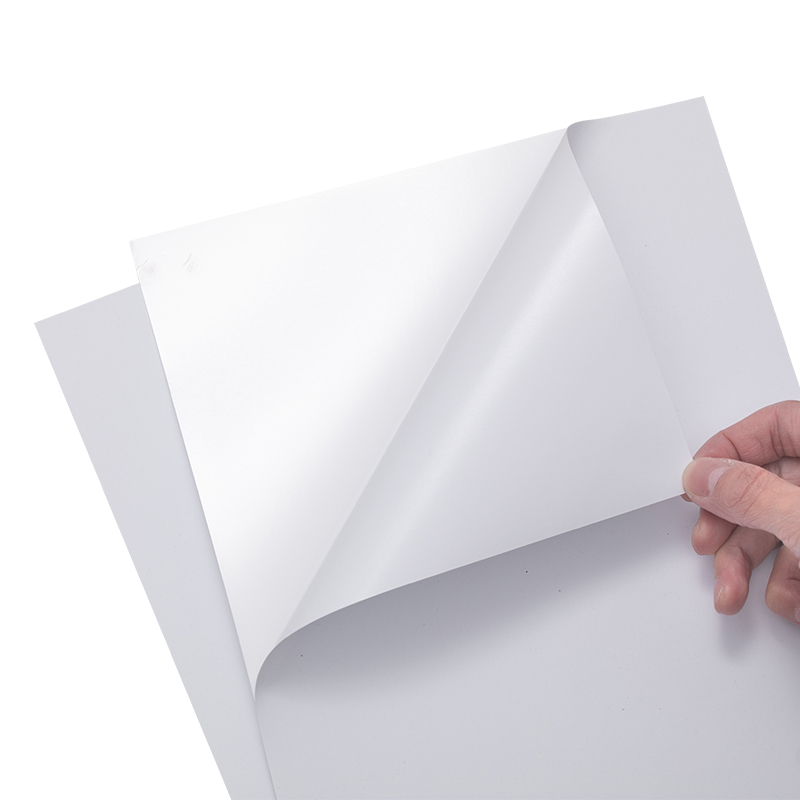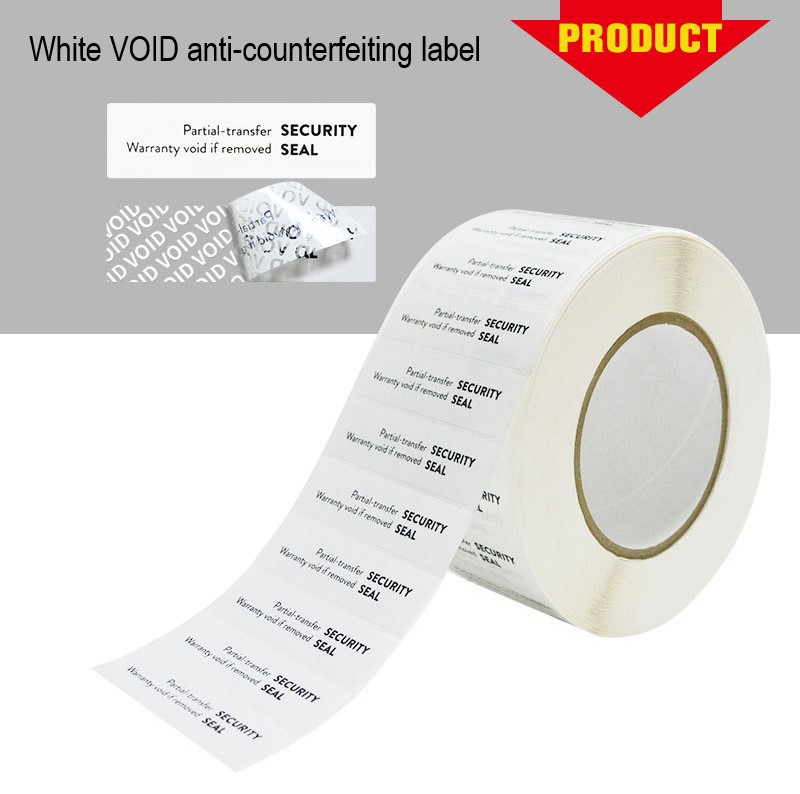Composition and Application of Adhesive Material Manufacturing Process
The basic structure of self-adhesive label materials consists of three parts: surface material, adhesive, and base paper. However, from the perspective of manufacturing process and complete structure, self-adhesive materials are composed of seven parts:
1. Surface coating: Used to change the surface characteristics of surface materials, such as improving surface tension, changing color, adding protective layers, etc., to make them better accept ink and easier to print, achieving the purpose of anti fouling, increasing ink adhesion, and preventing printed images and text from falling off. Surface coating is mainly used for non absorbent materials, such as aluminum foil, aluminum coated paper, and various film materials
2. Surface material: refers to the material that receives printed graphics and text on the front and M adhesive on the back, and is ultimately applied to the object to be pasted. The type of surface material is determined by the final application and printing processing technology< br /> < br /> 3. Bottom coat: also known as adhesive coating, can make the adhesive and surface material bond more tightly. Primer also has the function of preventing chemical reagents from penetrating, otherwise chemical reagents may penetrate from the bottom three layers and dirty the surface of the label. In addition, colored primers can also be used as backgrounds for transparent surface materials< br /> < br /> 4. Adhesive: Adhesive ensures moderate adhesion between the base paper and the surface paper, and also ensures good adhesion with the adhesive after the surface paper is peeled off. There are many types of adhesives, and different formulas can be selected according to different surface materials, substrates, and usage scenarios. Adhesive has a direct impact on the performance of adhesive materials and is one of the main performance indicators for measuring adhesive printing materials < br /> 5. Silicon oil layer: It refers to coating a silicon oil layer on the surface of the base paper. Coating a silicon oil layer can make the base paper a very low surface tension and smooth surface. Its function is to prevent the adhesive from sticking to the base paper, ensuring that the label and the base paper are easily separated
6. Base paper: also known as release paper or peel off paper, the function of the base paper is to receive release agent coating, protect barcode labels from being contaminated before use, and provide support to ensure that the labels will not bend or curl during the label processing, such as die-cutting, waste disposal, and labeling on the labeling machine. Base paper can be divided into paper base paper and film base paper. According to different processing techniques, paper base paper can be divided into over level calendering base paper, machine processed calendering base paper, and surface coated base paper< br /> < br /> 7. Back coating or back printing: Back coating is a protective coating on the back of the base paper to prevent the adhesive around the label from sticking to the base paper after waste disposal or rewinding. Another function is to manufacture multi-layer labels. Back printing is to print the registered trademark or pattern of the manufacturer on the back of the base paper, playing a role in publicity and anti-counterfeiting
Issues to be aware of when choosing adhesive label materials
Due to the fact that the substrate of adhesive materials is the printing carrier and has their own physical and chemical properties, it is not complicated to choose the appropriate substrate for different end products. However, the selection of adhesives is not as easy as choosing surface materials.
The quality of self-adhesive label paper is related to multiple factors such as raw materials, printing technology, and processing methods. If the raw materials are not good, such as poor paper quality, the printing effect will also be greatly reduced. The printing process and processing method are directly related to the practical indicators such as water resistance, wear resistance, and durability of label paper.
Secondly, what are the most concerning issues for customers? The first and foremost concerns are the stickiness and shelf life of the label paper, which means whether it is easy to fall off or fade after use. Next is the printing effect, including clarity, color reproduction, and so on. In addition, the stickiness and ease of tearing of label paper are also issues of great concern to customers
Copper plate paper adhesive material
Copperplate paper, also known as printing coated paper (Art paper; Coated art paper;Copper plate paper;Copper printing paper)。 Apply a layer of white coating on the surface of the base paper, which is processed by super calendering. It is divided into single-sided and double-sided types, and the paper surface is divided into two types: glossy and textured. The surface of the paper is smooth, with high whiteness and excellent ink absorption performance. The disadvantage is that the powder is prone to sticking and falling off when exposed to moisture, and cannot be stored for a long time
1. Material characteristics: Copperplate paper is a paper material made of cellulose fibers. It has high whiteness and glossiness, making the printing effect of the label more vivid and clear. The surface of copperplate paper has undergone special treatment to give it good flatness and printing performance, making it suitable for achieving high-quality pattern and text printing effects
2. Durability: Copperplate paper adhesive labels have good durability. It can withstand a certain amount of tension and pressure, is not easily torn or broken, and can remain intact during use. This makes copperplate paper adhesive labels particularly suitable for packaging and labeling goods that require transportation, handling, or other physical pressure
3. Water and oil resistance: Copperplate paper adhesive labels have good water and oil resistance. It can resist the erosion of moisture and oil, keeping the appearance of the label clean and the information clear. This makes copperplate paper adhesive labels widely used in food packaging, cosmetics labeling, and other situations where they need to be used in humid or oily environments
4. Printing effect: The surface of copperplate paper is smooth and flat, which can achieve high-quality printing effect. It can achieve diverse patterns and text effects through printing processes such as screen printing, offset printing, and hot stamping. The printing effect of copperplate paper adhesive labels is vivid and the colors are full, which can attract consumers' attention, enhance the brand image and market competitiveness of the product
5. Application areas: Copperplate paper adhesive labels are widely used in various industries and fields. It is commonly used for identification and labeling in fields such as product packaging, logistics transportation, office stationery, electronic products, food and beverage. The durability and printing effect of copperplate paper adhesive labels make them an important tool for brand promotion, product promotion, and information dissemination
In short, copperplate paper adhesive labels have good durability, water resistance, oil resistance, and excellent printing effects. It plays an important role in product packaging and labeling, enhancing product image and market competitiveness. Regardless of the industry, copperplate paper adhesive labels are a reliable choice
HP Indigo Printing Adhesive Material
HP Indigo digital printing adhesive material is a printing material that is coated with a special coating on the surface of ordinary adhesive material to increase the adhesion of ink on its surface. For the quality of digital adhesive materials, the uniformity of the special coating on the surface of the digital adhesive material and its adhesion to the surface of the digital adhesive material were mainly examined. Given that there are currently not many domestic users and there is no complete data available for reference in this area, label printing companies usually directly test the color fastness of ink during printing testing to evaluate the quality and final usability of digital adhesive materials
The HP Indigo digital adhesive material certification testing mainly includes the following aspects:
1. Continuous printing performance of materials:
2. Ink transfer performance and transfer quality
3. The adhesion between ink and material, as well as the scratch resistance of ink
4. Reproducibility of highlights, fine line quality, and integrity of image edges
5. Compatibility with rubber blanket, test whether it will produce memory effect of rubber blanket
The wider the temperature setting range of the rubber blanket, the better the compatibility of the material
We offer comprehensive technical support, including free professional labeling solutions, advice on label materials and adhesive selection, as well as online/offline assistance from professional software and hardware engineers. Service email: andy@ownlikes.cn. In pre-sales, we leverage our extensive experience in specialty labeling projects to provide clients with the most suitable hardware solutions. Additionally, all our label barcode printers and scanners come with a three-year free warranty, demonstrating our confidence in our products.






This site is protected by reCAPTCHA and the Google Privacy Policy and Terms of Service apply.